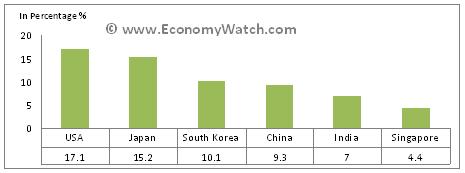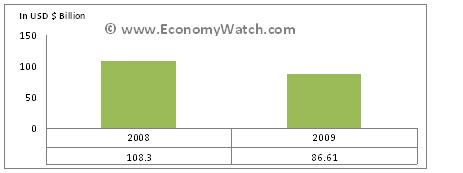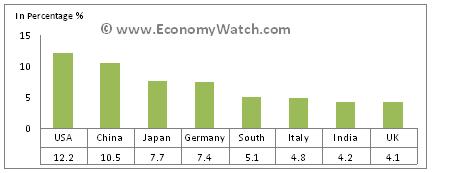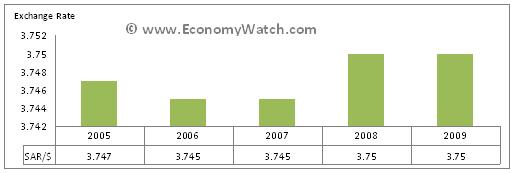Saudi Arabia Trade, Exports and Imports
Please note that we are not authorised to provide any investment advice. The content on this page is for information purposes only.
Saudi Arabia’s trade, exports and imports have increased ever since the nation joined the WTO in December 2005. Saudi Arabia has been ranked as the 13th most economically competitive country in the world by to the International Finance Corporation (IFC) -World Bank annual “Doing Business” report issued for 2010. Saudi Arabia is the world’s largest producer and exporter of petroleum products, and is the second largest oil producer after Russia.
Saudi Arabia’s trade, exports and imports have increased ever since the nation joined the WTO in December 2005. Saudi Arabia has been ranked as the 13th most economically competitive country in the world by to the International Finance Corporation (IFC) -World Bank annual “Doing Business” report issued for 2010. Saudi Arabia is the world’s largest producer and exporter of petroleum products, and is the second largest oil producer after Russia. Saudi Arabia’s trade remains heavily dependent on the oil and petroleum-related industries, including petrochemicals and petroleum refining. Oil export revenues have accounted for around 90% of the total Saudi export earnings and state revenues and above 40% of the country’s GDP.[br]
Saudi Arabia is the UK’s 23rd largest export market, with exports amounting to more than ₤2.270 million in 2008. The country is also the UK’s largest trading partner in the Middle East. The UK, in turn, is Saudi Arabia’s second largest foreign investor after the USA. The UK’s main trading commodities with Saudi Arabia include oil, gas and petrochemicals, power, water, financial services, construction materials and equipment, and consumer goods.
Saudi Arabia’s trade with China could exceed $60 billion by 2015, given that the target of $40 billion by 2010 was reached in 2008. During 2003-2008, the China-Saudi Arabia trade registered annual growth rates of 30% to 50%. In 2008, bilateral trade surged by 64.7% to $41.8 billion, well ahead of the goal set in 2006. Trade between the two countries amounted to $12.71 billion in 1H 2009, hit largely by the global economic crisis.
China exports textiles, mechanical and electrical products to Saudi Arabia, and imports crude oil. China’s crude oil imports rose by over 12% last year to 800,000 b/d.
India’s total non-oil trade with Saudi Arabia for 2008-2009 stood at $25.08 billion. Indian imports from Saudi Arabia were worth $19.97 billion, while the export figure for the period was $5.11 billion.
Saudi Arabia Trade: Exports and Imports
Saudi Arabia’s primary export commodities include petroleum and petroleum products. The following graph shows Saudi Arabia’s exports for the years 2008 and 2009. (All data are in US dollar billion.)
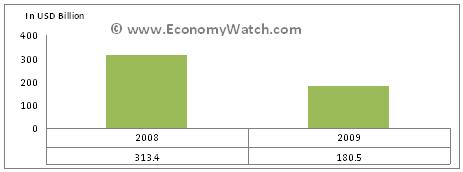
The next chart shows Saudi Arabia’s distribution of its major export partners. (All data are in percentages.)[br]
Saudi Arabia’s primary import commodities include industrial machinery and equipment, chemicals, automobiles and textiles. The following graph shows Saudi Arabia’s imports for the years 2008 and 2009. (All data are in US dollar billion.)
The next chart shows the distribution of Saudi Arabia’s major import partners. (All data are in percentages.)
The following chart illustrates the exchange rates of Saudi Riyals (SAR) per US dollar during 2005-2009.

